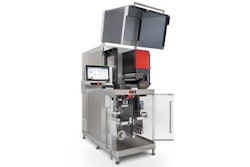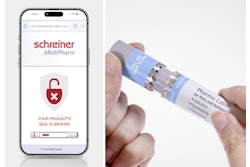
Neither the Drug Supply Chain Security Act (DSCSA) in the U.S., nor the Falsified Medicines Directive (FMD) in the European Union explicitly mandates the capture or use of aggregation data (see “Aggregation –> Chargeback Accuracy –> ROI” and “EU FMD: Aggregation Is Not Mandated, But It Will Be Necessary.")
In this instance, “aggregation data” is data that documents the serialized packaging containment hierarchy of drug products—also known as “parent-child relationships.” It is well established that companies are not required by law to capture it, but for the smooth operation of pharma supply chains under a serialization, tracing and/or verification regulation, high-quality aggregation data will be necessary. But there are warning signs that a significant percentage of drug manufacturers are not going to meet that bar by the deadlines.
The Healthcare Distribution Alliance (HDA) published a report last fall with industry readiness data they collected earlier in 2017.One of the questions they asked drug manufacturers was:
“Is your company planning to aggregate data (unit to case)?”
Seventy percent of the respondents said they planned to have aggregation data by November 27, 2018.
About the same time as the HDA survey, GS1 Ireland and Enterprise System Partners (ESP) conducted a similar survey to assess the readiness of drug manufacturers for meeting the FMD.In their survey they asked: “Do you plan to include aggregation as part of your strategy for EU FMD?”
Only 56% of their respondents said “Yes.” Considering the volume of product in both of these supply chains, these percentages are not encouraging.Neither survey asked if the aggregation data would be collected manually, or with some kind of automation.
It isn’t enough to just capture aggregation data manually, using hand-held barcode readers.To achieve aggregation data with enough accuracy to make it usable, you have to have at least some automation assistance (see “Pharma Aggregation: How Companies Are Achieving Perfection Today.") Pharmaceutical machine builders have been offering cost-effective, manual, automation-assisted packing stations specifically for capturing high-quality aggregation data for several years now, so there’s really no excuse anymore for using fully manual methods.For higher-volume products, a fully automated solution may be necessary.
If you are capturing aggregation data using hand-held barcode readers for anything other than a few cases’ worth of product, you might as well not bother.When downstream wholesale distributors and large dispensers receive your aggregation data, they will use it for various purposes.In the US, that includes saleable returns verification, and they will pass your data on to their customer for their use when they sell full-case quantities.In 2023, aggregation data accuracy will be even more critical in the U.S.
Next year in the EU, your aggregation data will be used to mass verify and decommission full case, full pallet and maybe even full shipment quantities whenever drugs are exported, converted to samples, stolen or damaged (see “EU FMD: Aggregation Is Not Mandated, But It Will Be Necessary.") Hospitals and pharmacy chains in the EU may use your aggregation data to verify and decommission everything in all of their incoming shipments to avoid having to verify/decommission at the time of dispense.Although, admittedly, if everything gets decommissioned via aggregation data, and nothing is actually scanned and decommissioned at dispensed, then these problems will go undetected.But then, what’s the point of a Point of Dispense (PoD) authentication regulation? t’s certainly not patient safety if everyone does mass decommissioning for everything!
If your data accuracy doesn’t approach six sigma, customer service problems may arise daily.Aggregation-triggered problems will prove to be very complex to resolve.Odds are, you will be forced to take good product back and destroy it because its serial number(s) is/are not accurately reflected in your aggregation data.Your costs for resolving these problems over time could exceed the cost to install aggregation data capture automation in the first place.
Aggregation data is the only thing that will ease the burden of compliance for downstream trading partners in a serialized world.But if the data is not consistently accurate, aggregation data will become a curse for everyone and the Achilles’ Heel of supply chain operation.If you are not planning to collect it, or you plan to collect it manually without automation assistance, I urge you to reconsider.
Editor’s note: This article was originally published August 6, 2018 on RxTrace.com. It is used here with permission by author Dirk Rodgers, Regulatory Strategist for Systech International and founder of RxTrace.





















